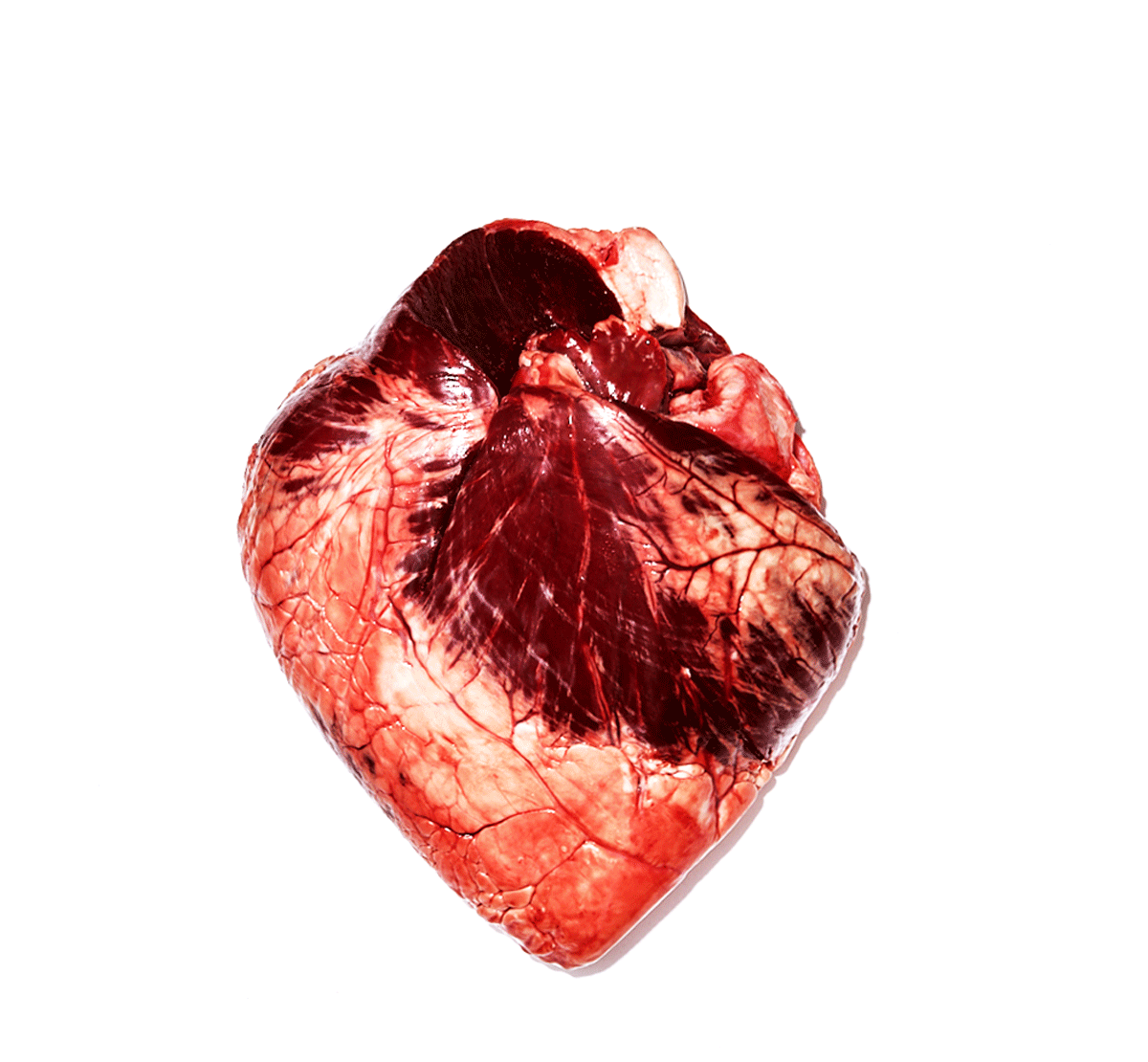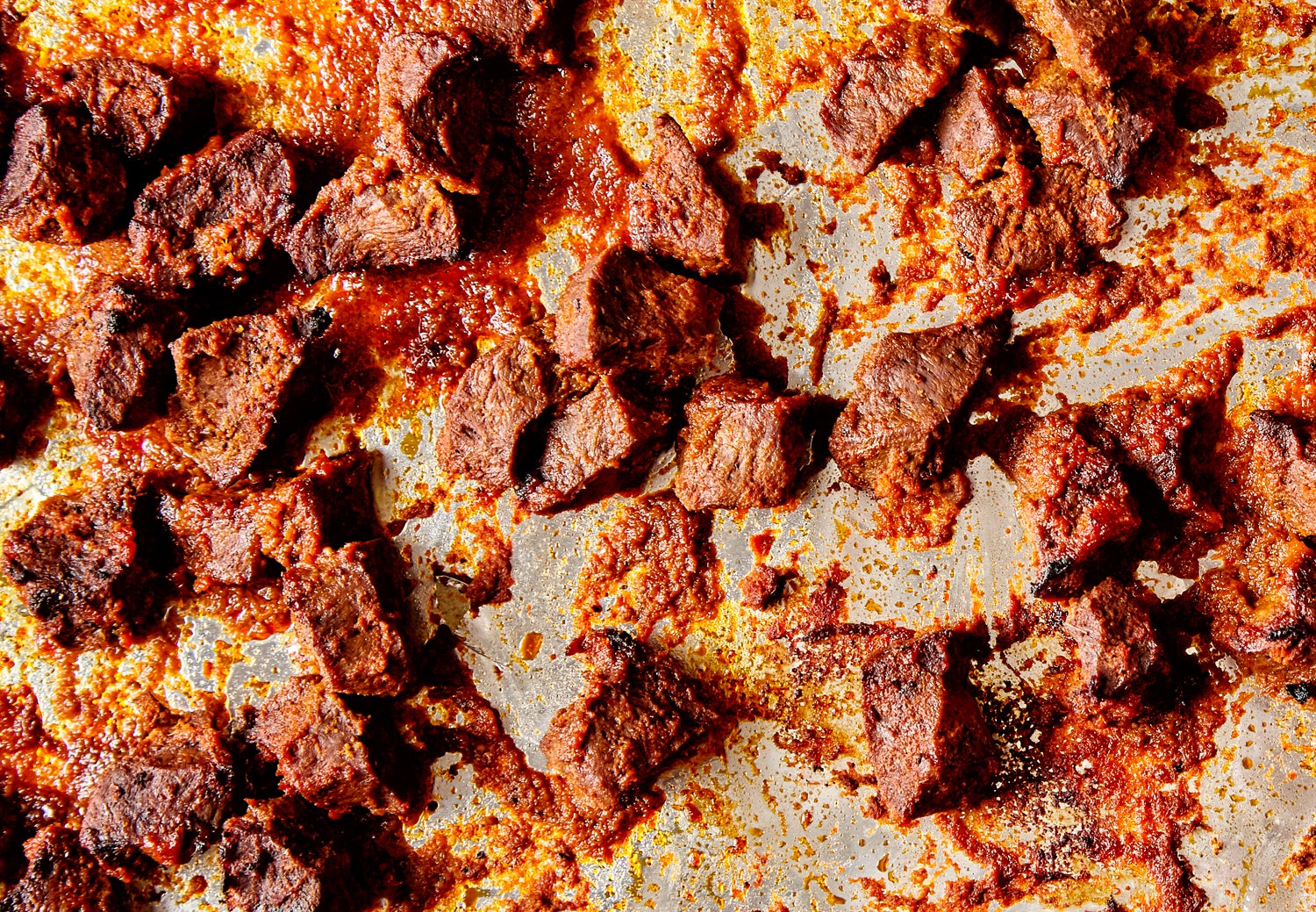
Beef heart is an extremely flavorful cut that is maybe not for the squeamish. But cooking a delicious dinner sometimes takes guts.
The heart is not an organ, of course: It’s a hard-working, very lean muscle. It’s closely related, in taste and temperament, to venison, though less gamey, and generally priced far below more standard cuts of beef. Every cow and calf has a heart. But it begs the question: How often do we actually want to eat them? Not often enough. Chicken hearts—commonly used in South American cooking and small enough to hold by the handful—can be less challenging, and a relative gateway drug to the hulking, mammalian beef and veal hearts that may give cooks greater pause. But the payoff for home cooks is profound—beef and veal hearts deliver a pleasingly intense meaty flavor, take well to bold seasoning, and can feed a lot of people. Cooking heart also allows the home cook the host’s satisfaction of offering something slightly spooky or morbid that might initially challenge the more performatively delicate among your dinner guests, but will ultimately reward the little bit of performative courage that heart-eating requires.
I also love to cook hearts because they’re versatile: Grill, sear, sauté, braise, or grind them—they can take it. I love the flavor, and the slightly chewy texture reminds me of the wild venison and Mallard duck breasts hunted and prepared by my outdoorsman father. I enjoy the little bit of easy knife work required to trim and slice a heart, and I suppose there’s some self-satisfaction at making something delicious out of something that all too often makes its way to the dog’s bowl or, worse, the trash can.
So, you may ask, where to even find such a thing? It’s a chicken-and-egg situation, so to speak: Beef and veal hearts aren’t really available in a typical grocer’s meat fridge because there isn’t much demand, and there isn’t much demand because, I suspect, consumers aren’t much aware of, or interested in, the supply.
But while Whole Foods might not stock them (though some can if you call ahead), many grocery stores (especially with South and Central American clientele) do, and asking to have a heart set aside at your local butcher shop—or inquiring of the meat purveyors at your local farmers’ market, who are often happy to sell the heart of a recently butchered animal to an appreciative customer—is not much of a stretch. And it’s often sold at a per-pound price that’s half to a third of what they get for more popular cuts. A whole beef heart, trimmed, can serve a crowd of six to eight, as will three to six smaller trimmed veal hearts; you’ll be hard-pressed to pay more than $20 for a trimmed whole beef heart.
“The heart and lungs of an animal are called the pluck, but it really takes none at all to eat and enjoy them both,” wrote Calvin W. Schwabe in Unmentionable Cuisine, an entertaining and useful book, published in 1979, about cooking and eating offal, insects, domesticated creatures, and other potentially squeamish-making food sources.

Beef heart marinated in Thai red curry.
Schwabe’s book reflects a sense of adventure and thrifty purpose, and I found it an excellent supplement to the standard texts I was issued as a culinary student nearly 20 years ago. Our class spent a few perfunctory days braising sweetbreads, searing liver and sautéing kidneys. I was thrilled by the novelty of shapes and smells, the mildness of the sweetbreads, the richness of the liver, even the challenging uric tang of the kidneys, and the chewy, crisp, and yielding textures that could be coaxed from these rejected parts, in concert with rich veal stock, browned onions, butter, wine, herbs, and proper seasoning.
When it was my turn to create a lunch special for the student-run restaurant, I prepared crisp-tender lamb brain fritters, accompanied by sautéed spinach and a piquant tomato sauce. (We sold exactly two orders, both to sympathetic, curious, and/or brave chef-instructors.) For my final project, I prepared an organ meat tasting menu, the centerpiece of which was a stuffed and roasted veal heart, napped with a fussy, mustardy Sauce Robert, a super classic white wine and veal demi glace–based sauce apparently developed in the time of Rabelais (so I learned from my beloved Larousse Gastronomique.)
After a few years of cooking and writing professionally, I pitched the idea of an organ meat cookbook to a vision-challenged literary agent, who immediately shot it down as being unappealing and without a market. (Now, as I look at Chris Cosentino and Fergus Henderson’s bodies of published works, and the current vogue for nose-to-tail eating, I invite you to ask me about my regrets, resentments, and failures of courage!)
These days, I like my hearts cooked quick and relatively bloody, as befits such lean muscle. The flavor can be a little more iron-intensive than your typical piece of meat, which is easily balanced with a spicy, fatty seasoning strategy (see recipe below). On the advice of butcher Josh Applestone, I’ll cut a beef or veal heart into relatively even half-inch slices and trim off all external fat and the connective tissue within the opened chambers. With a good, sharp blade, heart is no more challenging to slice than chicken breast.
“My rule is ‘Leave behind nothing you wouldn’t want to see in a medium-rare hamburger,’” says Applestone, coauthor of The Butcher’s Guide to Well-Raised Meat, whose eponymous company purveys meat from a growing number of stand-alone vending machines in New York’s Hudson Valley. Applestone suggests grinding the lean meat together with fatty lamb or beef to make burgers, meatballs, or taco filling. I generally don’t bother with a meat grinder, which looks cool but can be messy and labor-intensive; I prefer to cut the hearts (or any meat) into approximately three-quarter-inch chunks and carefully pulse it in the food processor. (As a side benefit, after feeding said burgers to a table full of hungry, carnivorous schoolchildren, you can thrill and/or permanently alienate them with full disclosure that they’ve just eaten an animal’s heart, with lettuce, cheese, pickles, and onions on a sesame seed bun!)
My favorite way with hearts, of late, is to marinate the slices in a piquant, semidry spice paste, broil, and use them as a base for lettuce wraps, with fresh herbs, sprouts, and roasted chopped nuts on offer, and sticky rice or noodles alongside.